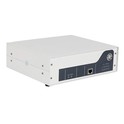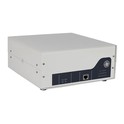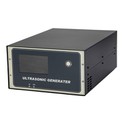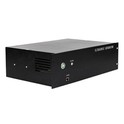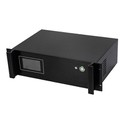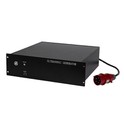The use of digital circuit ultrasonic generators makes it easy to adjust the control scheme and implement a variety of new control strategies by changing the program software. At the same time, the number of components is reduced and the hardware is realized. In addition, it can automatically save operating data and automatically diagnose faults, which can eliminate the shortcomings of conventional analog regulators such as temperature drift that are difficult to overcome. It is conducive to parameter setting and variable parameter adjustment, which helps the intelligence of ultrasonic generators. So, let's take a look at the basic principles of ultrasonic generators.

The application of digital control technology to ultrasonic generators generally has the following forms.
(1) Control with single-chip microcomputer
The single-chip microcomputer control of ultrasonic generators overcomes the defects of analog circuits, but due to the contradiction between the operating frequency and control accuracy of the single-chip microcomputer, and the processing speed is difficult to meet the requirements of high-frequency circuits, through digital control methods, high-precision and high-stability control characteristics can be obtained, and flexible and diverse control functions can be realized. People seek more powerful chips, and digital signal processors come into being.
(2) Digital signal processor control
Digital signal processors are a new generation of programmable processors that have rapidly emerged in recent years. The chip integrates sampling/holding and A/D conversion circuits to provide PWM signal output. Some internal integrated ultrasonic generators and FIFO buffers provide high-speed synchronous serial ports and standard asynchronous serial ports. Compared with single-chip microcomputers, DSPs have faster CPUs, higher integration, and larger memory.
DSP is a recording system computer, most instructions can be executed in one cycle, and parallel processing technology allows multiple instructions to be executed in one cycle. At the same time, DSP adopts an improved structure with independent programs and data space, while the ultrasonic generator single-chip microcomputer is a complex instruction system computer, most instructions require 2~3 instruction cycles to complete. Programs and data can be stored at the same time. Built-in high-speed hardware multiplier, increase multi-stage pipeline, with high-speed data computing capabilities. But the multiplication operation needs to be implemented by software, which takes up more instruction cycles and is slower.
Compared with 16-bit single-chip microcomputers, the ultrasonic generator DSP executes a single instruction 810 times faster, and the single-chip microcomputer adopts Neumann structure, the program and data are stored in the same space, and commands or data can only be accessed separately at the same time. Although DSP has many advantages, it has limitations such as sampling frequency selection, PWM signal frequency and its accuracy, sampling delay, operation time and accuracy. The ALU of the ultrasonic generator microcontroller can only perform addition operations, and the multiplication time is 16-30 times faster. In the ultrasonic generator, DSP can complete all functions except power conversion, such as main circuit control, system real-time monitoring and protection, system communication, etc. These factors more or less affect the control performance of the circuit.
The above is an introduction to the basic principle of the ultrasonic generator. If you need to know more, you can contact us at any time.

